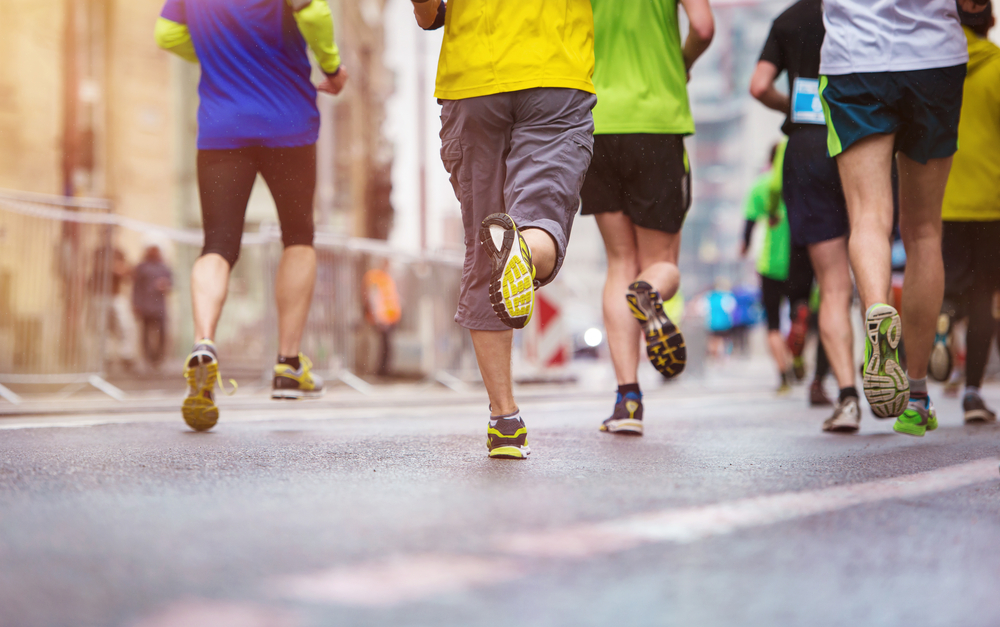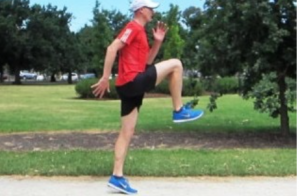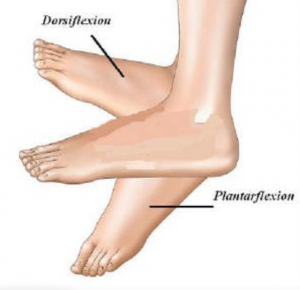Trigger Motion: Running Terms For Those New to the Game

Evan Stevens
Trigger Motion: Running Terms For Those New to the Game
Heading to the track to the first time can be a daunting task. All the new terms and jargon being casually tossed around can lead to a lot of frustration for the ‘newbie’ sprinter and distance runner alike. Proper running form is one of the most stressed activities at practice, especially at sprint practices, often taking up the majority of the time spent at the track. Yet it is also one of the most technical, jargon heavy activities in all of running. A newbie may ask questions about what is means to dorsiflex or plantarflex or load off your toes and drive with your knees, but rarely does a coach properly explain what they mean, how and why it contributes to running, and things that you can do, as a budding athlete, to get started.
Related Post: Become A Runner At Any Age
Dorsiflexion
Something that you may hear your coach talking about is dorsiflexion. Dorsiflexion is the action of bringing the top part of your foot, called the dorsum, towards your shin. This shortens the distance between your toes and ankle, activating your shin muscles, primarily your tibialis anterior (the muscle responsible for the pain of shin splints). While this motion isn’t emphasized nearly as much in distance athletes, sprint athletes still practice this motion because it helps get the foot off the ground faster.
The thought is that as you step down, the faster you can get your foot off the ground, the faster your next stride starts. What you are doing is shortening the lever and loading the natural spring that is the muscles and ligaments of your leg. The lever is your lower leg below the knee. Bringing your foot closer to your shin as you push off rather than letting your toes drag, shortens the swing distance that your leg has to go through to get to the next step. This shorter distance means a faster, easier swing, allowing your next stride to come sooner. More strides means more continuous power, and you end up going faster.
Dorsiflexion and Your Stride
Dorsiflexing through your stride also allows you to absorb the impact of your next stride much more efficiently. Sprinting is synonymous with landing on the balls/toes of your feet. In the slightly pitched forward position you are in while sprinting, planting your foot in a dorsiflexed position allows your foot to act like a natural, loaded spring – your ankle, shin and foot already storing the power to propel you into your next stride. Landing in this pre-loaded position allows the rest of your leg to activate and engages more muscle groups, putting more power into your stride, further increasing speed. A fast runner needs to be able to plant their foot in a dorsiflexed position so they don’t lose any speed.
Plantarflexion – Running on Your Toes.
If dorsiflexion is the movement of raising your toes up, plantarflexion is the action of pointing your toes down. This straightening of the ankle joint is done primarily through the action of the two big calf muscle – the superficial (closest to the skin) fast-twitch gastrocnemius and the deeper, endurance-oriented soleus. Plantarflexion is what we typically think of when we talk about fore-foot running, or running on your toes.
It is touted as being the most efficient form of running for longer distances because it not only provides more power by using the leg’s natural spring, but also because it seems to reduce the amount of stress placed on the joints, especially the knee. Part of the spring is fairly easy to see – flex your toes and feel the bottom of your foot. You should feel a band running right along the middle– this is your plantar fascia. This flat connective tissue is what connects your heel to your toes, acting as arch support.
Plantarflexion and Power
During toe off, it undergoes tension, storing power, and can snap back to shape, just like a spring – this is where power comes from. What also happens when we land on our toes is that we are putting a load on our Achilles tendon, which connects our heel with our calf muscles – the gastrocnemius and the soleus. This is a second spring which undergoes tension as we toe off, pulling and activating the muscles and creating a “pulling” motion that creates more power at toe off.
This, coupled with activated hamstrings on toe off generates force, pushing you forward. These two springs working in tandem provide forward speed and strength as well as take a lot of stress out of hard landings, absorbing the force and transferring it through the muscles, ligaments and tendons as opposed to the bones and joints. Several studies has shown that landing on your toes significantly reduces patellofemoral knee force (the cause of runner’s knee) and knee pressure.
Practice: Calves
Improving dorsi- and plantarflexion ability relies on strength and balancing exercises. Basic calf raises are an easy way that you can build strength at home while not at the track. Start off with doing a simple calf raise. So, start with your foot flat on the ground and raise yourself up until you are on the ball of your foot. Rest a hand lightly against a wall for stability and raise and lower yourself slowly with only your calves.
Once you feel comfortable on both feet, try taking your hand away from the wall and do your calf raises in an open area. It is important to keep your shoulders and hips square and engage your glutes (clench your behind) and core while doing these calf raises; not only will it help with balance, but it helps with improving form and creating muscle memory. Engaging your core and glutes as you run stabilizes you, preventing your hips from dropping (which can lead to knee injuries and poor spring-loading) and preventing your shoulders from swaying too much which can waste energy.
Practice: Core and Glutes
Engaging your core and glutes as you run stabilizes you, preventing your hips from dropping (which can lead to knee injuries and poor spring-loading) and preventing your shoulders from swaying too much which can waste energy. As you get more comfortable with the calf raises, start to incorporate them into your pre-run warmup and drills as a marching drill. As you step, raise the trail knee into a 90-degree prone position ahead of you, with that foot dorsiflexed. On the foot that is still on the ground, rise up on your toes and hold that position for a few seconds before going into your next step. These “half strides” will help you to engage all the muscle groups as you are starting to move and promote balance and power.
As you get more comfortable with the calf raises, start to incorporate them into your pre-run warmup and drills as a marching drill. As you step, raise the trail knee into a 90-degree prone position ahead of you, with that foot dorsiflexed. On the foot that is still on the ground, rise up on your toes and hold that position for a few seconds before going into your next step. These “half strides” will help you to engage all the muscle groups as you are starting to move and promote balance and power.
Related Video: How Do I Get Started?
Hips Don’t Lie
While dorsiflexion and plantarflexion certainly come into play with effective and efficient running, they are hardly the whole story. In fact, more evidence is suggesting that everything stems from the hips, from glute and hamstring activation, to proper foot fall and power output. Getting your feet off the ground faster certainly helps you run faster but it isn’t entirely the reason you run faster; it may well be just a by-product of faster running. Your foot striking at a certain angle or how your ankle is flexed may not cause the activation of the glutes, hamstrings, quads or calf muscles, but may be all part of a concurrent activation elsewhere.
Running force is generated at the hip, not at the ankle – the ankle helps to transfer the force to the ground, but activation doesn’t start from there. Rather, think of ankle flexion as the trigger motion rather than the generator motion. It is the point that triggers the next stride and puts the potential force into action. The hip is where force is generated and potential begins. However, the ankle is the trigger that puts it all together. Dorsiflexion can be practiced every time you step on the track. But, without knowledge of good hip support you aren’t going to get too far.
Bracing and Squaring
The good thing is that the marching exercise described above is going to help a lot with this too. Practicing bracing and squaring your hips and engaging your core is going to improve the start of your stride at the hip. Learning to drive with your knees is going to help too. This means getting your knees back out in front of you faster and a strong drive downward. Running high knees where emphasis isn’t place on “lifting” the leg, but on driving it up and down is going to help.
Starting from blocks and practicing staying low and pitched forward is going to do wonders as well; this will put you in a slightly unbalanced position where you feel like you are falling forward and you need to pitch your knees forward in order to keep yourself from eating rubber. What should happen as your hip motion gets stronger is that dorsiflexion will happen naturally as a result and less time spent on the ground and faster running will be the outcome. But you can’t just read about trigger motions and think you are going to get faster – get out there, have some fun, and practice!
Read More Articles By Evan Stevens
YOU MIGHT LIKE:
















